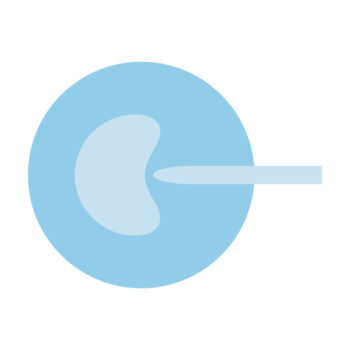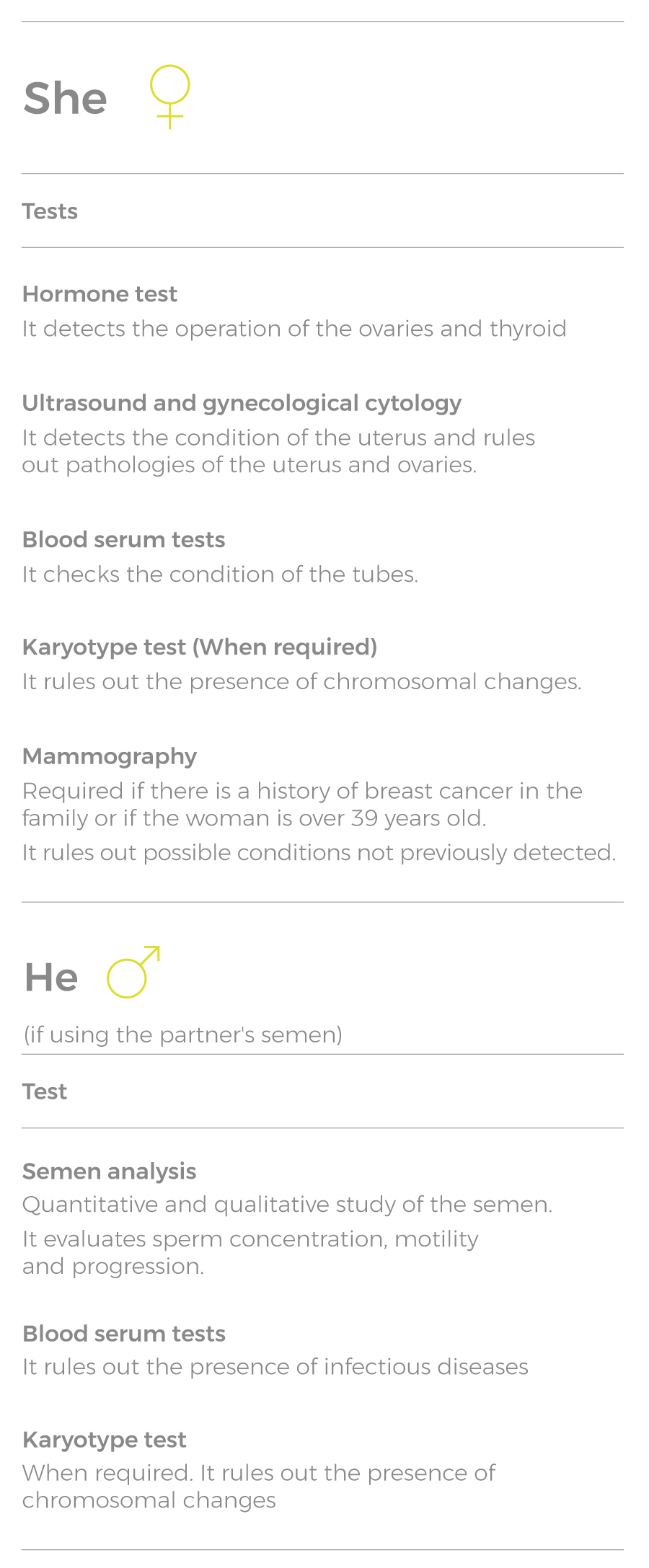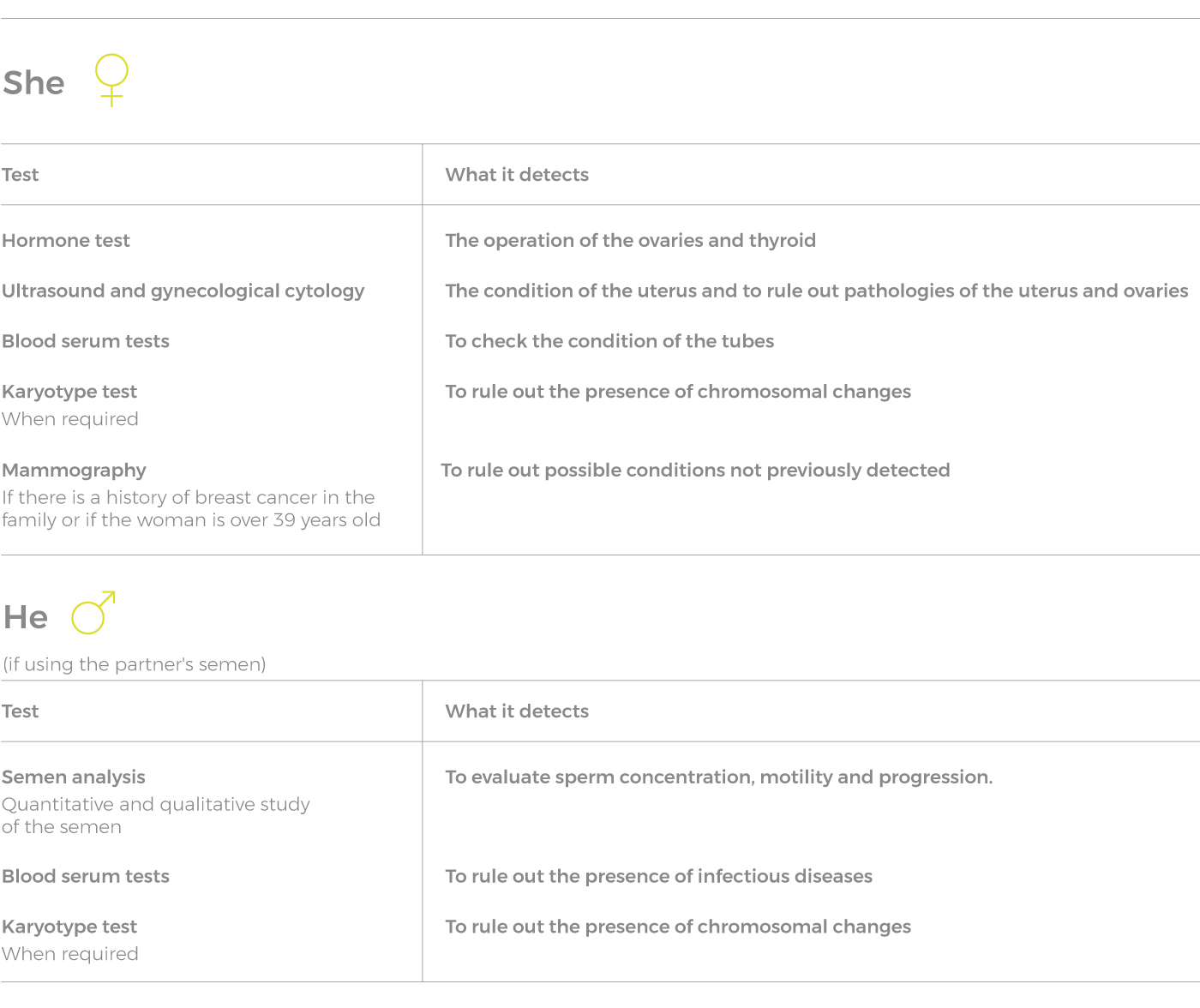In vitro fertilization (IVF) consists of fertilizing the egg with a sperm in the laboratory and, once the embryos are created, transferring them into the woman’s uterus.


It's one of the most common treatments in assisted reproduction clinics.
In vitro fertilization (IVF) consists of fertilizing the egg with a sperm in the laboratory and, once the embryos are created, transferring them into the woman’s uterus.

As with all treatments, it begins with an initial visit to get information and request the tests. By the second visit, the doctor has already made a diagnosis and the participants sign the consent form.

Once all the requested medical tests are performed, the doctor evaluates them and explains the medical treatment required – what procedure will be used, what alternative options there are, the benefits and risks of the process, etc. – and answers any questions the patients might have. Once the entire procedure is understood, the patients sign the consent forms in order to begin the treatment.
This depends on multiple factors, including the woman’s age, the quality of the ovarian reserve, the quality of the embryos transferred, and the presence of uterine pathologies or a genetic condition. We can’t provide the odds of overall pregnancy. After studying your case, the medical team will give you a more reliable evaluation of your odds of getting pregnant.
It’s best to do a personalized assessment. Depending on the results and on the progress being made, the doctor will recommend the best course of action for the patient.
At Reproclinic we handle everything to ensure your chances of success are as high as possible. We use the techniques needed to optimize the results, such as ICSI or time lapse, at no extra charge.
The Assisted Reproduction Law in Spain allows transferring up to three embryos. Transferring more embryos could lead to multiple pregnancies, which is undesired and poses a risk to both the mother and the babies.
If the male cannot ejaculate on the day of the fertilization, the sperm will be extracted directly from the testicle by microsurgical aspiration. This is a well-tolerated process that is done under local anesthesia and poses no risk.
We can guarantee the highest compatibility with the female recipient, but you cannot choose the semen donor, since they are anonymous by law.
They can be cryopreserved for future use or donation.
On your physical, mental, analytical state and on your own fertility. Law 14/2006 of May 14 on assisted human reproduction techniques establishes that the donation must be made anonymously, voluntarily, informed and unpaid.
Egg donors must be 18 years old and not over 34 years old and must have the ability to act and be in good physical and physical health. The donation must be formalized through a confidential, written and signed contract between the donor and the medical center.
As with all treatments, it begins with an initial visit to get information and request the tests. By the second visit, the doctor has already made a diagnosis and the participants sign the consent form.

Once all the requested medical tests are performed, the doctor evaluates them and explains the medical treatment required – what procedure will be used, what alternative options there are, the benefits and risks of the process, etc. – and answers any questions the patients might have. Once the entire procedure is understood, the patients sign the consent forms in order to begin the treatment.
This depends on multiple factors, including the woman’s age, the quality of the ovarian reserve, the quality of the embryos transferred, and the presence of uterine pathologies or a genetic condition. We can’t provide the odds of overall pregnancy. After studying your case, the medical team will give you a more reliable evaluation of your odds of getting pregnant.
It’s best to do a personalized assessment. Depending on the results and on the progress being made, the doctor will recommend the best course of action for the patient.
At Reproclinic we handle everything to ensure your chances of success are as high as possible. We use the techniques needed to optimize the results, such as ICSI, at no extra charge.
The Assisted Reproduction Law in Spain allows transferring up to three embryos. Transferring more embryos could lead to multiple pregnancies, which is undesired and poses a risk to both the mother and the babies.
If the male cannot ejaculate on the day of the fertilization, the sperm will be extracted directly from the testicle by microsurgical aspiration. This is a well-tolerated process that is done under local anesthesia and poses no risk.
We can guarantee the highest compatibility with the female recipient, but you cannot choose the semen donor, since they are anonymous by law.
They can be cryopreserved for future use or donation.